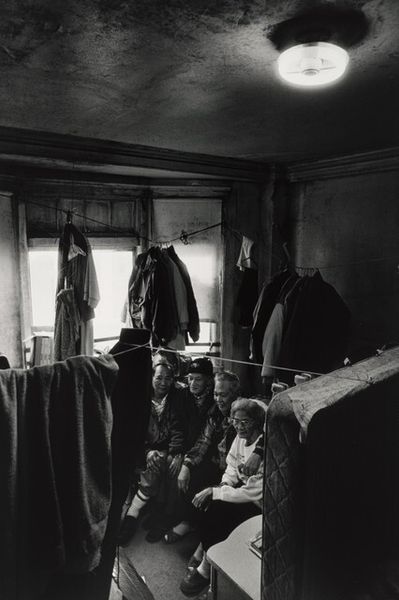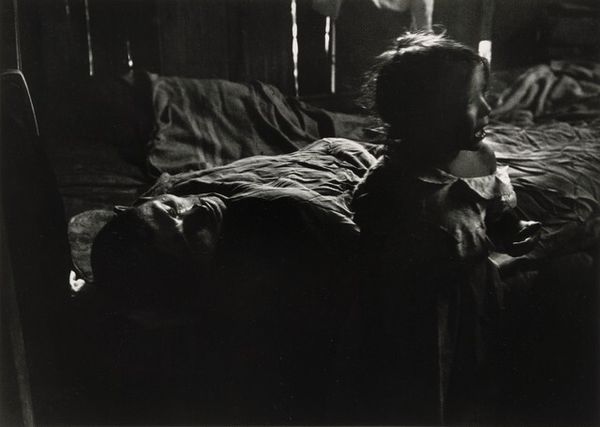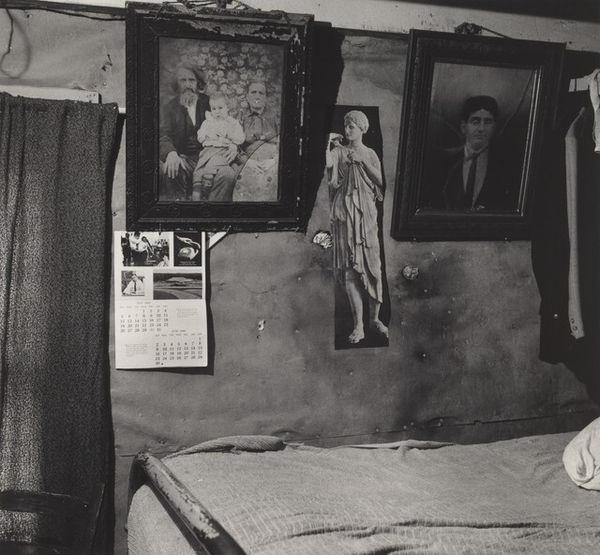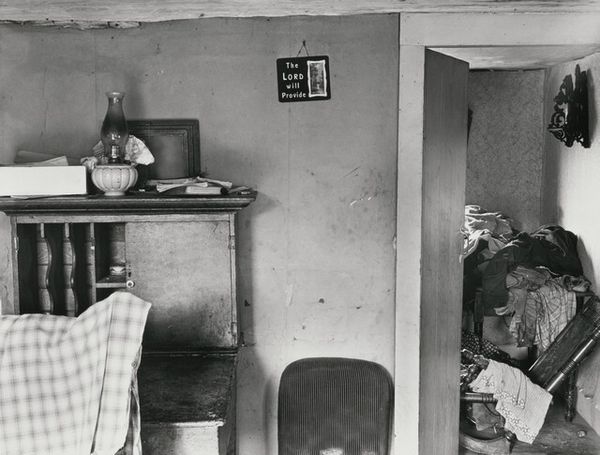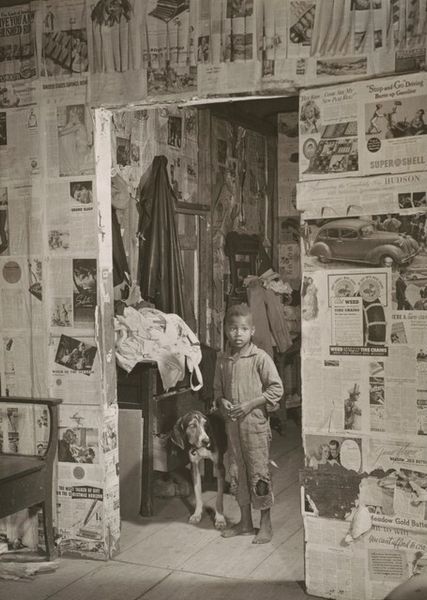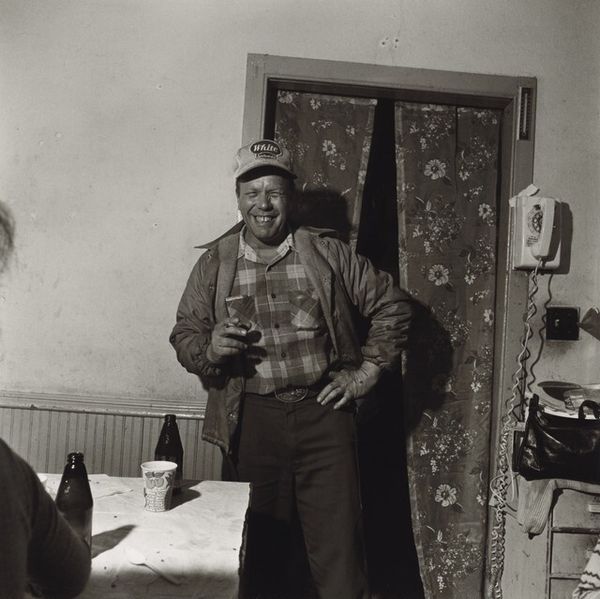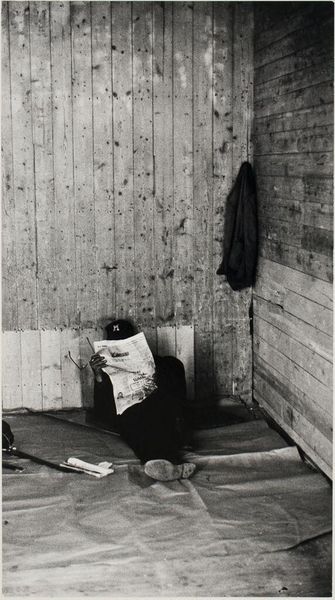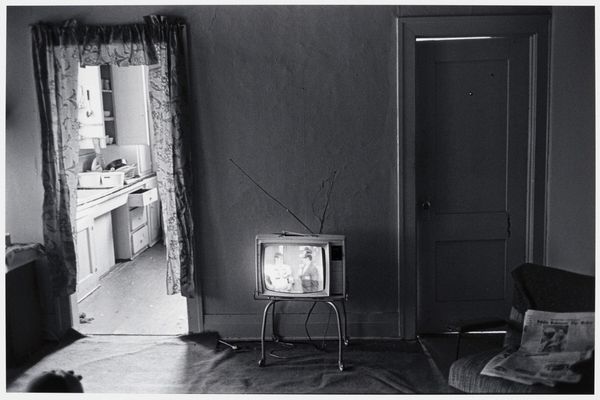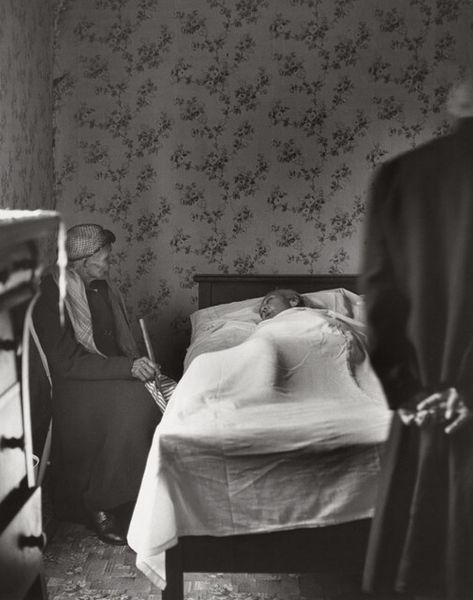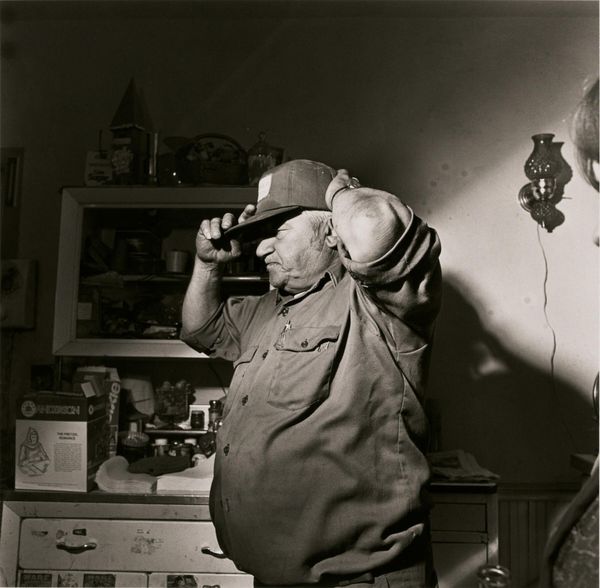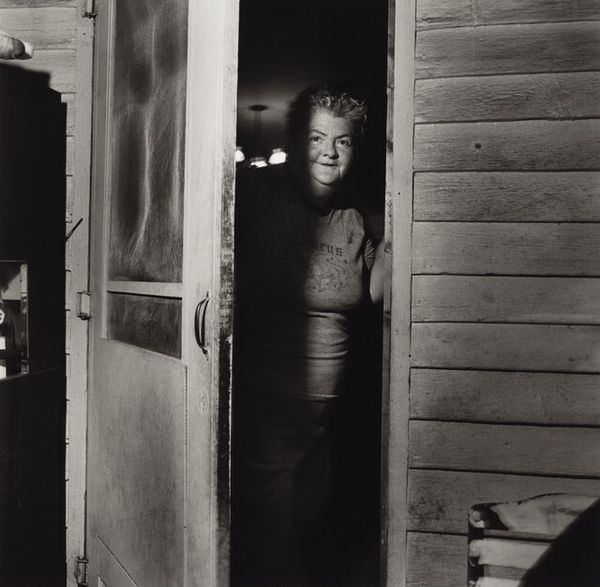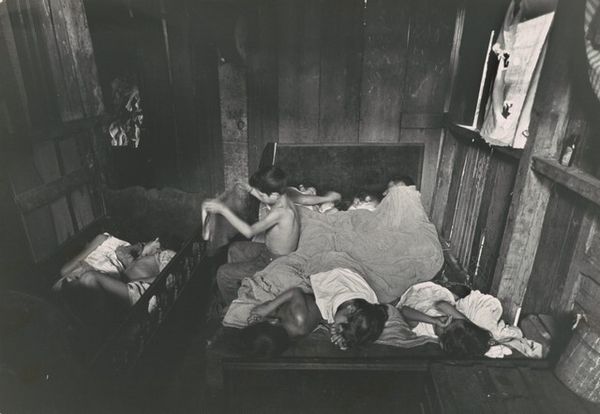
photography, gelatin-silver-print
#
portrait
#
photography
#
gelatin-silver-print
#
genre-painting
Dimensions: image: 34 × 46 cm (13 3/8 × 18 1/8 in.) sheet: 40.4 × 51.1 cm (15 7/8 × 20 1/8 in.)
Copyright: National Gallery of Art: CC0 1.0
Editor: Here we have Nancy Andrews' 1993 gelatin-silver print, "The Hensons." There's something so raw and tender about this embrace. I am really drawn to the intimacy captured in a public space; a bustling thrift store. What draws your eye when you look at this piece? Curator: What strikes me is the layering of economic and emotional realities. On one hand, we have the pragmatic backdrop of the price list and the secondhand clothes, indicating a certain socioeconomic context. Yet, foregrounded, we see this intense moment of human connection. Editor: It's as if the artist is trying to say that human connection trumps all material wealth. Curator: Precisely! Think about how the image is composed: the tight embrace pushing against the backdrop of the 'Price List.' Andrews uses this juxtaposition to invite us to contemplate the resilience of human bonds amidst economic realities. Are we, as viewers, also implicated in this economy? Are we implicated in the system which places economic and material worth above care and love? Editor: That's an interesting angle. Do you think gender and sexuality play a role in how we perceive this photograph? Curator: Absolutely. Andrews, who openly identifies as a lesbian, often explores queer lives in her work. This image could be seen as a tender portrayal of chosen family within a community perhaps marginalized or underserved. The photograph invites questions about what it means to care for each other in spaces of economic precarity, in the context of cultural stigma. The photograph becomes an activist statement on humanity. Editor: This gives me a new understanding of photography. I learned so much; the photo embodies socio-economic issues of the time. Curator: It is incredible how Andrews was able to invite us into this critical discourse by depicting tenderness. I’m walking away thinking about the politics of care, especially within marginalized communities.
Comments
No comments
Be the first to comment and join the conversation on the ultimate creative platform.
